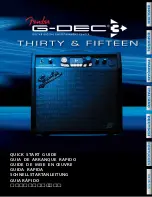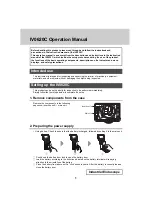
Congratulations on your new Xotic Guitar!
We take pride in building this guitar for you to enjoy. Please
take time to read this owners manual as it will guide you
through some basic adjustments and answer questions that
will keep your guitar working great for years.
IMPORTANT:
• Keep in mind that a guitar is made of wood. Exposure to
various temperatures and humidity levels will affect the
factory setup. Climate conditions at every point of the
guitar’s travel to you may have an effect on its factory
setup specs.
• If you plan to change string gauges, you may need
to adjust the specs somewhat to compensate for the
changes in string sizes.
• This manual will introduce you to setting up, adjusting
and maintaining your guitar so it plays the way that you
like. If you do not feel comfortable performing these
adjustments please take your guitar to an authorized
Xotic repair center.
INTONATION:
Intonation is defined as the pitch of your guitar strings as you
move up the fretboard. You can set you guitar’s intonation by
making the second octave (the 12th fret and above) stay in
tune with the first octave. The way this is done is by shortening
or lengthening the length of the string.
To intonate your
guitar:
1. Use a high quality tuner and tune all of your strings at the
harmonic on the 12th fret: E A D G B E. Adjust the tuning
pegs slowly to be as accurate as possible.
2. Place your finger on the 12th fret and pluck the string. Your
harmonic on the 12th fret and the fretted note on the 12th
fret should both play the same note - neither sharp nor
flat.
You can adjust the intonation of the 12th fret by adjusting the
scale length. To do this, move the saddles with an adjustment
screw (in this case, a Phillips head screw) until the note at the
12th fret and the open string are the same.
LOCKING TUNERS:
To remove the string:
1. Place a coin or screw driver in the front notch of the tuning
peg slot. Loosen the string by turning the peg counter
clockwise until the string is loose, but not fully unwound.
2. While holding the
coin firmly to keep
the locking tuner
static, continue
loosening the
string by turning
the tuning peg
clockwise with the
other hand until
the string releases.
To string the guitar:
1. Pull the new string through the locknut and turn the
tuning peg while using the other hand to hold the string
keeping the lock nut static. Note: Do not lock the string
forcibly.
2. Trim the excess string.
PICKUP HEIGHT:
The pickup heights on each Xotic guitar is set to our standards
at our shop; however, they can be adjusted. To adjust the
pickup height: turn the two screws at either end of the pickup
(3 screws for the bridge and two screws for the neck under
the pickguard). After you set your desired string height, fret
your strings at the highest position to check your pickup
height - Distance between top of the polepiece (High E and
Low E) and bottom of the strings.
NECK RELIEF:
To measure neck relief
you will need a capo
and a feeler gauge.
Place a capo on the
first fret. With the low
E string depressed at
the last fret, use the
feeler gauge and measure the gap between the bottom of
the string and the top of the eighth fret (measuring from fret
wire itself, not the fingerboard), which is where the curvature
should be deepest.
TRUSS ROD ADJUSTMENT:
Please note:
we DO NOT recommend that you perform this
task but, instead, take it to an authorized repair person. Broken
truss rods are not covered under warranty.
To adjust the
truss rod:
1. Remove the
pickguard.
2. With a truss rod
tele crank, tighten
or loosen the truss
rod as needed.
3. You may need to
re-adjust saddles
once truss rod is adjusted.
STRING HEIGHT:
To measure string
height (the height of
the string above the
fret) place your feeler
gauge along the top
of the frets. The string
height markings are at
Содержание XTC Series
Страница 1: ...X TC X TC E S T Y L E U S E R M A N UA L...





















